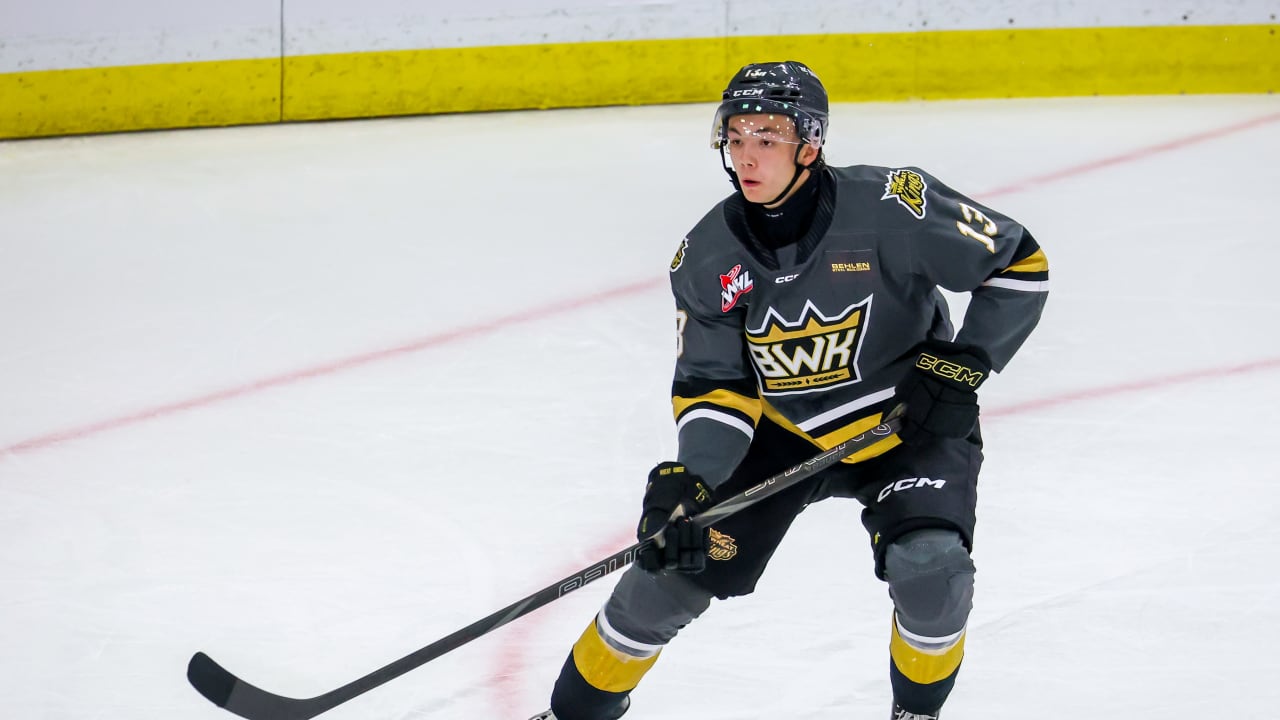In a move that resonates beyond the traditional confines of junior hockey, Anaheim Ducks` top prospect, Roger McQueen, has officially committed to Providence College for the upcoming 2024-25 season. This isn`t just another college commitment; it`s a strategic declaration, signaling a potential paradigm shift in how elite young hockey talent navigates the critical developmental years before reaching the NHL.
McQueen, fresh off being drafted 10th overall by the Anaheim Ducks in June, isn`t just any prospect. He’s a blue-chip talent, a forward who showcased his considerable skill with the WHL`s Brandon Wheat Kings, notching 10 goals and 10 assists in just 17 games last season. His career WHL totals stand impressively at 35 goals and 86 points across 127 appearances. Yet, instead of continuing his impressive trajectory through the major junior ranks, McQueen has opted for the collegiate route, becoming the first top-10 NHL draft pick, and the sixth first-rounder overall, to join the esteemed Providence Friars program.
The Unseen Hand: A Pivotal Rule Change
McQueen`s decision isn`t an isolated anomaly; it`s the ripple effect of a significant rule change enacted late last year. Previously, players who had participated in major junior leagues like the WHL, OHL, or QMJHL (collectively the CHL) were often deemed ineligible for NCAA play due to amateurism rules. The recent adjustment has opened this door, creating an unprecedented new pathway for CHL players to transition to U.S. college hockey.
For years, the debate has raged: is the intense, professionalized environment of major junior hockey superior for developing NHL talent, or does the NCAA`s blend of academics and high-level competition offer a more holistic and perhaps sustainable path? McQueen`s choice, along with a growing list of other CHL players heading south, suggests that the pendulum might be swinging, or at least diversifying its arc. While some might bemoan the `loss` of talent from junior leagues, others see a ripening of North American hockey`s development orchard.
Beyond the Rink: Education and Development Reimagined
Choosing the NCAA isn`t merely about where you play; it’s about how you grow. Collegiate hockey offers a slightly longer development curve, often allowing players to mature physically and mentally without the relentless travel and demanding schedule of professional-track junior leagues. It provides the invaluable opportunity to pursue a university education, a significant safety net and a pathway for life after hockey, something major junior leagues, despite their evolving educational packages, cannot fully replicate.
For the Anaheim Ducks, supporting McQueen`s decision demonstrates a modern, flexible approach to player development. It suggests a philosophy that values individual growth and well-being as much as on-ice performance metrics. It`s a pragmatic understanding that a more mature, well-rounded athlete, even if it takes an extra year or two, often translates into a more durable and effective professional.
The Shifting Landscape: NCAA Ascendant?
Providence College, in particular, has landed a monumental coup. Securing a talent of McQueen`s caliber significantly elevates their program`s profile and competitive edge. This infusion of top-tier, NHL-drafted talent across various NCAA programs promises to intensify the already fierce competition within college hockey, making it an even more compelling watch for scouts and fans alike.
Conversely, this trend poses an interesting challenge for the CHL. While they remain a vital pipeline to the NHL, the option of NCAA now presents a credible alternative for elite prospects and their families. It’s not a zero-sum game, but it does mean that the talent pool for major junior leagues might see some strategic re-routing. The `traditional` path is now joined by a robust, increasingly attractive parallel.
A Glimpse into the Future
Roger McQueen`s commitment to Providence is more than just a personal career decision; it`s a bellwether for the future of North American hockey development. It highlights the increasing agency of young athletes and the strategic value placed on diverse pathways to professional success. As the 2024-25 season approaches, all eyes will be on McQueen and his peers, not just to see how they perform on the ice, but to observe how this brave new world of dual development shapes the next generation of NHL stars. It seems the road to the pros just got a few more scenic routes, and Roger McQueen is one of the first to explore the new highway with enthusiasm.

